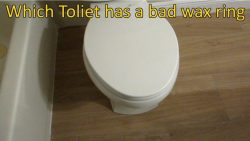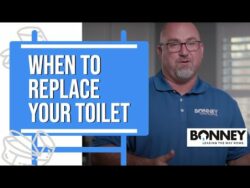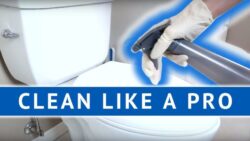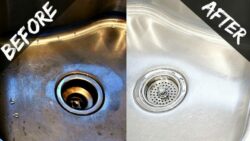Clogged Kitchen Sink Drano Not Working
So, Drano failed you, huh? Looks like you’re dealing with a stubborn clog in your sink. But don’t worry, it happens to the best of us. Before you call in a professional plumber, try these five tips to unclog your sink and save yourself some money. First up, grab a plunger. Yes, the same plunger you use for your toilet can be used to unclog your sink.
Fill the sink with enough water to cover the plunger, then place the plunger over the drain and give it a few vigorous pumps. This should create suction that can dislodge the clog. If the water starts to drain, then you know you’ve successfully unclogged your sink. If not, move on to the next tip.
Use a Plunger
Now it’s time to grab a plunger and get to work. Plungers are a great tool for unclogging sinks because they create suction and pressure that can help loosen and remove blockages. To get the most out of your plunger, make sure you are using the right technique. First, place the plunger over the drain and add enough water to cover the rubber cup. Then, push down firmly, creating a seal, and pull up quickly. Repeat this motion several times until the water starts to swirl down the drain.
There are different types of plungers you can use depending on the type of sink you have. Cup plungers are the most common and are best for flat surfaces like sinks and tubs. Flange plungers, on the other hand, have an added rubber flap that can create a better seal on curved surfaces like toilets. Make sure to choose the right plunger for your sink. If your sink is still clogged after several attempts with the plunger, it may be time to call a professional plumber.
Additionally, be aware of safety tips when using a plunger. Never use a plunger after pouring chemical drain cleaners down the sink, as this can cause harmful chemical splashes. Always wear gloves to protect your hands from any debris or bacteria.
Try Boiling Water
If you’re dealing with a stubborn clog, try boiling water. Boiling water is a simple and effective way to unclog a sink without using harsh chemicals. However, it’s important to note that boiling water can also cause damage to your pipes if not used correctly. Before pouring boiling water down your drain, take preventative measures to ensure that your sink is ready for the hot water. Remove any visible debris or hair from the drain and use a plunger to loosen any buildup.
Once you’re ready to pour the boiling water, slowly pour it down the drain in stages, allowing it to work its way through the clog gradually. It’s important to note that boiling water can have adverse effects on certain types of pipes, such as PVC or plastic pipes. If you’re unsure about your pipes, use hot water instead of boiling water to avoid damaging your pipes. Additionally, avoid pouring boiling water down a sink that has recently been unclogged with chemicals, as the chemicals can react with the hot water and cause damage.
Use Baking Soda and Vinegar
You can easily unclog your drain by using baking soda and vinegar, which are two of the most common household items that can be used for various cleaning purposes. Baking soda is an alkaline substance that can break down organic matter, while vinegar is an acidic substance that can dissolve mineral buildup and grease. When these two substances are combined, they create a fizzing reaction that can help break down clogs and leave your pipes clean and clear.
To use baking soda and vinegar for unclogging your sink, start by pouring a pot of boiling water down the drain to loosen any debris. Then, sprinkle a cup of baking soda down the drain and let it sit for a few minutes.
After that, pour a cup of vinegar down the drain and cover it with a drain plug or a rag. Let the mixture sit for about 30 minutes, and then pour another pot of boiling water down the drain.
This process can be repeated as needed until the clog is cleared. When using baking soda and vinegar to unclog your drain, there are a few best practices to keep in mind. First, be sure to use equal parts of baking soda and vinegar to create the fizzing reaction.
Second, cover the drain with a plug or a rag to prevent the mixture from bubbling up and overflowing. Third, wait at least 30 minutes before flushing the drain with boiling water. Finally, avoid using this method if you have already used a chemical drain cleaner, as the combination of chemicals can create a hazardous reaction.
Use a Drain Snake
Insert the snake into the drain by feeding it down through the opening until you feel resistance. Move the snake around by turning the handle clockwise while applying gentle pressure to dislodge the clog. Finally, remove the snake and test the drain by running water to ensure the water flows freely. Make sure to adjust the paragraph structure to logically group complete sentences on their own lines, with a double new line after. Also, feel free to use contractions.
Insert the Snake into the Drain
Don’t be afraid to get a little dirty and use the snake to clear out any stubborn clogs in your drain. Using a drain snake is an effective way to clear out blockages without resorting to harsh chemical cleaners.
Here’s how to properly use a drain snake:
- First, push the snake down into the drain until you feel resistance. This is likely the clog. Keep pushing the snake until it breaks through the blockage.
- Once you’ve hit the clog, turn the handle on the snake to break it up. Keep turning until you feel the resistance release.
- Slowly pull the snake out of the drain, being careful not to let any debris fall back into the sink.
Using a snake is a great alternative to using chemical drain cleaners, which can be harmful to both you and the environment. By using a snake, you can avoid harsh chemicals while still effectively removing clogs. Remember to use the snake carefully and follow these steps to ensure that you clear the clog and don’t cause any damage to your pipes.
Move the Snake Around to Dislodge the Clog
If your sink is still not draining after using a snake, try moving the snake around in different directions to dislodge the clog, like Jane did when she found a particularly stubborn blockage in her bathroom sink. Start by inserting the snake into the drain again and pushing it down as far as it will go. Once you feel resistance, start rotating the snake in a clockwise direction while slowly pulling it back towards you. If you feel the snake hit the clog, try pushing it through the blockage and pulling it back towards you again. Repeat this process several times, rotating the snake in different directions to try and break up the clog.
Here are some additional tips to keep in mind when using a snake to unclog your sink:
| Best snake types | How to prevent sink clogs |
|---|---|
| * Handheld snakes | * Avoid pouring grease down the drain |
| * Power snakes | * Use a drain cover to catch hair and debris |
| * Toilet augers | * Flush only toilet paper and human waste |
| * Flat tape snakes | * Run hot water down the drain after each use |
| * Bellows plunger snakes | * Schedule regular drain cleanings with a plumber |
Remember that using a snake can be a messy and time-consuming process, so it’s important to take steps to prevent sink clogs from happening in the first place. By following these tips and performing regular maintenance on your sink and drain pipes, you can save yourself the hassle of having to deal with a clogged sink in the future.
Remove the Snake and Test the Drain
Now that you’ve moved the snake around to dislodge the clog, it’s time to remove the snake and test the drain to see if the water is draining properly. Before you remove the snake, make sure to turn off the water and put on gloves, as the snake may be dirty or covered in debris. Once you remove the snake, check for any blockages that may have come loose during the unclogging process. If you find any blockages, use a pair of pliers or a gloved hand to remove them.
After you’ve removed the snake and any blockages, it’s time to test the drain to see if it’s working properly. Turn on the water and let it run for a few minutes to ensure that the drain is fully clear and that the water is flowing smoothly. If the water is still slow to drain or if you notice any unusual sounds or smells coming from the plumbing, inspect the plumbing more closely to identify any other clogs or issues. By thoroughly testing the drain and inspecting the plumbing, you can ensure that your sink is fully unclogged and working properly.
Call a Professional
You could always call in a professional to take care of the issue. While many people prefer to unclog their sinks on their own, there are times when it’s better to leave it to the experts.
Pros vs DIY: Which is better for unclogging sinks? While DIY is often cheaper, it’s not always the best option for stubborn clogs that require more specialized tools and expertise.
One of the biggest advantages of hiring a professional is that they have the experience and equipment to get the job done quickly and efficiently.
They can diagnose the issue, recommend the best course of action, and provide a lasting solution that prevents the problem from recurring. In addition, they can help identify and fix any underlying issues that may be causing the clog, such as damaged pipes or tree roots. If you decide to go the professional route, it’s important to find a reliable sink-unclogging professional. Look for someone who is licensed, insured, and has a good reputation in the community.
You can ask for recommendations from friends and family, or search online for reviews and ratings of local plumbers. Once you’ve found someone you trust, make sure to ask for a written estimate and a guarantee of their work. With the right professional on your side, you can rest assured that your sink will be unclogged and working properly in no time.
FAQs
What are some common causes of sink clogs?
To prevent sink clogs, it’s important to know the common causes. Food particles and grease buildup are two of the most frequent culprits. As you wash dishes or cook, small food particles can become lodged in the drain, gradually building up over time and causing a blockage. Grease, on the other hand, can quickly solidify and create a stubborn clog.
To avoid these issues, regular cleaning and avoiding pouring grease down the drain are two important prevention tips. Make sure to wipe down dishes and utensils before rinsing them, and use a strainer to catch any food particles. Additionally, pour grease into a container and dispose of it in the trash, rather than pouring it down the drain. By following these simple tips, you can help prevent sink clogs and avoid the need for harsh chemicals like Drano.
Can using too much Drano or other chemical drain cleaners cause damage to the pipes?
You may think that using chemical drain cleaners like Drano is a quick and easy solution to unclog your sink but beware of the potential damage they can cause to your pipes. These harsh chemicals can eat away at the inside of your pipes, leading to corrosion and leaks. Instead, consider using eco-friendly alternatives like baking soda and vinegar, a plunger, or a drain snake.
Not only are these options gentler on your pipes, but they also won’t harm the environment. By avoiding chemical drain cleaners and opting for more natural solutions, you can keep your pipes in top condition and avoid costly repairs in the future.
How long should I wait before trying another unclogging method if the first one doesn’t work?
When faced with a clogged sink, it’s important to have a plan in place for unclogging alternatives. If the first method doesn’t work, it’s important to have a waiting period before trying another.
This waiting period can vary depending on the method used, but typically waiting 15-30 minutes is appropriate. This gives the initial method time to work and can prevent damage to the pipes from using too many chemicals or harsh tools.
Having a variety of unclogging alternatives on hand, such as a plunger or drain snake, can also help in case the first method doesn’t work. By being patient and prepared, you can tackle even the toughest sink clogs.
Are there any safety precautions I should take when using a drain snake?
When using a drain snake, there are important safety tips to keep in mind. First and foremost, always wear protective gloves and eye goggles to prevent any injury or exposure to harmful chemicals.
Additionally, make sure to read and follow the manufacturer’s instructions carefully, as improper use could cause damage to your plumbing or injury to yourself. When using the snake, it’s important to use the proper technique, starting with inserting the snake slowly and carefully, and then turning it clockwise to break up any clogs.
Finally, be sure to clean the snake thoroughly after use and store it in a safe, dry place to prevent any damage or corrosion.
By following these safety tips and using the proper technique, you can effectively unclog your sink without any harm to yourself or your plumbing.
How can I prevent future sink clogs from occurring?
To prevent future sink clogs from occurring, there are several maintenance tips you can follow. First, avoid pouring grease or oil down the drain, as they can solidify and create blockages. Additionally, use a drain catcher to prevent hair and other debris from entering the drain.
Regularly clean the drain stopper and overflow to remove any buildup. Consider pouring boiling water down the drain once a week to break up any potential clogs. Finally, if you have a garbage disposal, make sure to use it properly and avoid putting fibrous or hard-to-grind materials down it.
By following these preventative measures, you can avoid the hassle and frustration of dealing with clogged sinks in the future.
So, you’ve tried using Drano to unclog your sink, but it didn’t work. Don’t worry, there are still several options available to you. First, try using a plunger to dislodge the blockage. Make sure you cover the overflow drain with a wet rag before beginning.
If that doesn’t work, try pouring boiling water down the drain. Be careful not to burn yourself, and make sure the drain is made of sturdy material that can withstand the heat. If boiling water doesn’t do the trick, mix equal parts baking soda and vinegar, and pour the mixture down the drain. Let it sit for about 30 minutes before flushing with hot water. If the blockage still persists, try using a drain snake to physically remove the obstruction.
And if all else fails, don’t hesitate to call a professional plumber. In conclusion, there are several options available to you if Drano fails to unclog your sink. Using a plunger or boiling water are both effective, natural methods of removing blockages. Baking soda and vinegar can also be used to dissolve the blockage, while a drain snake can physically remove it.
And if all else fails, calling a professional is never a bad idea. Remember, the key to preventing future clogs is proper maintenance and regular cleaning of your drains. So be proactive and keep your sinks running smoothly.





